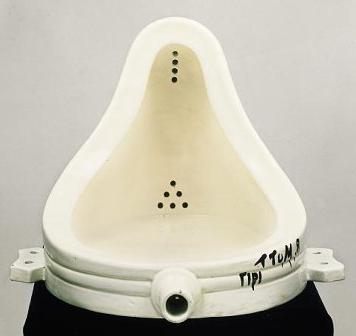Conceptual art is a modernist form of artistic expression in which specific concepts or ideas (usually personal (occurring in the artist’s mind) and complex) take the form of abstract, inappropriate images based on the denial of aesthetic principles. By definition, the pioneer of this direction, the American artist Saul Le Witt, in conceptualism, an idea or concept (concept) is the most important aspect of the work. This means that the decision has been made in advance, and its implementation is just a formality. The idea turns into a mechanism.
Generally speaking, conceptual art is a combination of various trends, rather than a closely related movement. And it has many forms (including: installations, performances, happenings, ephemera). It was born in the first half of the twentieth century, not as an artistic direction, but as a certain philosophy that calls into question the meaning of art itself. Dadaist Maurice Duchamp, who introduced a
new artistic practice, argued that the idea of a work is more important than its physical representation. From the mid-1960s to the mid-1970s, conceptual artists created works that completely rejected the traditional ideas of art: aesthetics, expressiveness, craftsmanship (including compliance with market requirements).
However, it is important to understand that conceptual art developed in a sequence of avant-garde movements (cubism,
abstract expressionism and the like), which succeeded in significantly expanding the boundaries of the
concept of art. Conceptualists (in the strict sense) are the finalists of the avant-garde tradition. In truth, it doesn’t matter if this extremely complex intellectual form corresponds to subjective ideas about what art should be like, since the fact remains. Some works of conceptualists are perceived by museums, collectors, art dealers as masterpieces of world art.
Borrowing various methods (such as minimalism), conceptual artists sought to rethink the forms of pop art that did not rely on the theoretical foundations of art. Being strongly influenced by the above-mentioned minimalism (its simplicity), they, at the same time, categorically rejected his concepts, which were embodied in sculpture or painting, characteristic of perceptual or “perceived” art (it is created primarily for visual perception). In relation to it, the “conceptual” pursues completely different goals. The ancient art of Egypt, expressing ideas is very subjective and extremely symbolic, can serve as an association to some extent. The idea, according to artists, can take shape in any physical form. The relationship between the artist, who uses all the available elements of expression, his work and the audience is absolutely transformed.

Conceptual art is not just a description of nature in all its diversity. The artist expresses his attitude to social, political, technological things and processes. In many cases, the viewer and the artist himself become an integral part of this art and its basic concepts. Having begun as a movement among the numerous art trends of the sixties, conceived to demonstrate the priority of the artist’s ideas, today it is considered collectively (as an aesthetic point of view of conceptualism), exerting a great influence on modern methods of artistic expression.